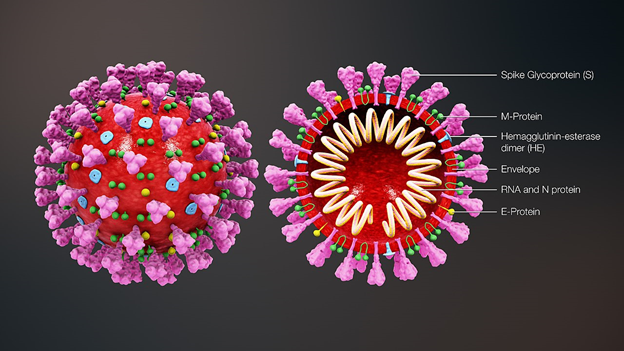Vaccines usually take over 10 years to develop, test, and mass produce. But, scientists predict we could have an effective vaccine for Covid-19 by early 2021. How is this possible? They’re betting on a new vaccine strategy. If successful, it could be transformative. A thread.
Before we dive into how this vaccine is different, let’s talk about how vaccines work. Getting a vaccine is like teaching your immune system how to ride a bike, but with the training wheels still on. For more details, check out this thread: https://twitter.com/jenheemstra/status/1289636342108954624">https://twitter.com/jenheemst...
So, how do we make vaccines? Typically, a vaccine is made by creating a weakened or dead version of the virus (or bacteria). Unlike the actual disease, these viruses have lost the ability to enter your cells, replicate, and make you sick.
But, your immune system will still recognize them as something that doesn’t belong in your body and launch a response. Once your immune system learns how to fight the dead version of the virus, it will be ready if it ever encounters the live version.
This approach requires lengthy development, though. Because the actual virus is being used, scientists have to be extra sure that it can’t mutate back into a version that is harmful. This is why vaccines are so rigorously tested for safety.
Okay, so what’s different this time? To understand that, let’s take a look at the structure of a virus. Here’s a drawing of the SARS-CoV-2 virus that causes Covid-19. It’s made up of a protein shell that surrounds a molecule called RNA.
The RNA molecule is a long chain that encodes the instructions for making more copies of the protein shell. This is how the virus can hijack your cells to produce more copies of itself. Also important are the spike proteins – those are what help the virus enter your cells.
Scientists hypothesized that for a vaccine to be effective, maybe your body doesn’t need to see the entire virus, but instead just needs to be exposed to the spike protein. They’re thinking that if you can make antibodies for the spike, it could prevent infection with the virus.
Thus, instead of trying to make a dead version of the whole virus, they are focused on trying to just deliver the spike protein. But, producing and delivering the protein itself is also super tricky. So, they’re taking one more step back in the process.
The vaccines that are furthest in clinical trials deliver either an RNA or DNA molecule that codes for the spike protein. We can understand this by comparison to the process of building with Lego bricks. (credit to my colleague @MrSteveKnutson for inspiring this analogy).
See, trying to deliver the spike protein is kind of like trying to build billions of Lego trucks and ship them all over the world. It’s time consuming and expensive.
In comparison, delivering the mRNA or DNA that encodes the sequence of the spike protein is like mass producing and shipping billions of instruction booklets for how to build a Lego truck. Still not trivial, but in principle much easier.
Your cells already have the building blocks needed to make proteins, so if scientists are able to deliver the mRNA or DNA that has the instructions for the spike protein, then your body should be able to make the protein and allow your immune system to learn to deal with it.
Successfully sending these instructions still requires a lot of work to optimize – much like a paper booklet, the RNA and DNA molecules can be easily torn into pieces, and scientists need to make sure they get delivered to the right place in your body to make the protein.
While these are significant challenges, this new approach is being driven by the potential to develop a vaccine faster than we ever have. And, if it works, it could have a profound impact on how we develop vaccines in the future.
If scientists are able to generate a protective immune response by just delivering the mRNA or DNA instructions, then as the virus mutates or new viruses emerge, they can quickly edit these instructions and deliver them again to make a different protein.
This would mean that in the future, we could develop and produce vaccines for new viruses even faster and this would enable us to contain outbreaks before they hit the pandemic scale. If possible, that would be transformative.

 Read on Twitter
Read on Twitter






